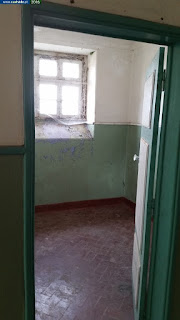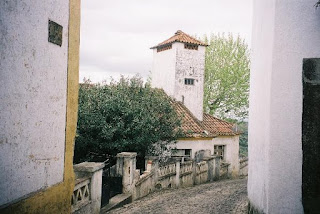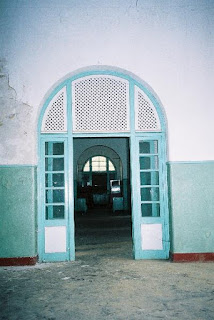- - - - - - - - - - - - - - - - - - - - - - - - - - - - - - - - - - - - - - - - - - - - - - -


GOOGLE MAPS: OPEN MAP
One of the earliest references to the waters of Castelo de Vide dates back to 1706, and refers to the Fonte da Vila, whose present building dates back to the reign of King João III. In spite of the recognized excellence of water and its therapeutic properties, as well as the local importance of the source (which was the generating point of the medieval urban system itself), this and other sources of the locality - in the case of Fonte da Mealhada - were only considered for after the analyzes made by Charles Lepierre in 1918, date from which began to be studied the capture of the spring. In 1940 studies began for new abstractions, and the construction of the bathing resort began. The medieval village thus received a modern drainage network, and all the flow of Fonte da Vila was diverted to the thermal complex.The beach was completed in 1942, with a project by architects Ernesto and Camilo Korrodi. The thermal establishment and annexes, located about 20 meters from Fonte da Vila and at an average level of 4 to 5 meters lower than this one, included a buvette (the water of Castelo de Vide being particularly suitable for treatments by ingestion), four bathrooms for men and four for women, and booths for showers and other treatments. The building, of modest dimensions, is a typical example of the public architecture of the Estado Novo, of regionalist aesthetics. It worked until the beginning of the 90's, and today it is abandoned, although it is conserved in relative good state of conservation. Sílvia Leite / DIDA - IGESPAR, I.P. 2011
Uma das primeiras referências às águas de Castelo de
Vide data de 1706, e refere-se à Fonte da Vila, cuja edificação actual deverá
remontar ao reinado de D. João III. Apesar da excelência reconhecida da água e
das suas propriedades terapêuticas, bem como da importância local da fonte (que
constituiu o ponto gerador do próprio sistema urbano medieval), esta e outras
nascentes da localidade - caso da Fonte da Mealhada - só foram consideradas
para fins medicinais depois das análises efectuadas por Charles Lepierre em
1918, data a partir da qual começou a ser estudada a captação da nascente. Em
1940 iniciaram-se estudos para novas captações, e teve início a construção do
balneário. A vila medieval recebeu assim uma rede de esgotos moderna, e todo o
caudal da Fonte da Vila foi desviado para o complexo termal.
O balneário ficou concluído em 1942, com projecto dos arquitectos Ernesto e Camilo Korrodi. O estabelecimento termal e anexos, localizados a cerca de 20 metros da Fonte da Vila e num nível médio de 4 a 5 metros inferior a esta, incluía um buvette (sendo que a água de Castelo de Vide é particularmente adequada a tratamentos por ingestão), quatro quartos de banho para homens e quatro para mulheres, e cabines para duches e outros tratamentos. O edifício, de dimensões modestas, é um exemplo típico da arquitectura pública do Estado Novo, de estética regionalista. Funcionou até ao início da década de 90, e hoje encontra-se abandonado, ainda que se conserve em relativo bom estado de conservação.
Sílvia Leite / DIDA - IGESPAR, I.P. / 2011




























